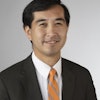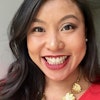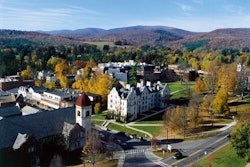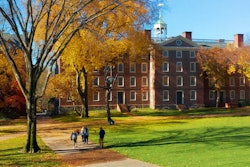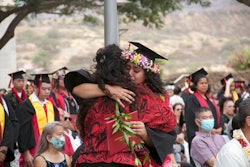Overshadowed
Although generally not included in newspaper accounts or history books, a number of Asian Americans were heavily involved in the Black Panthers.
By Lydia Lum
Ask the average person what comes to mind at the mention of the Black Panther Party.
Odds are the answer involves armed African-Americans winding up in shootouts with police. Those images have overshadowed the Panthers’ free breakfast programs, medical clinics and other efforts to improve poor Black neighborhoods in the late 1960s .
Also overshadowed is the fact that a handful of Asian Americans were heavily involved in the Panthers. One of them, Richard Aoki, was a friend of BPP founders Huey Newton and Bobby Seale and influenced their ideology and the contents of the famous Ten Point Platform. Aoki was among the first dozen BPP members, rising to field marshal status. During the same period, at least two Asian Americans in Seattle became Panthers as well.
Yet the stories of the “Asian Panthers” aren’t well known even among scholars who study the Black power movement. Although BPP members were overwhelmingly Black, a handful were of Asian or Hispanic descent, says Dr. Diane Fujino, an associate professor of Asian American studies at the University of California, Santa Barbara who’s working on Aoki’s biography. The non-Black members were few, and generally widely dispersed geographically, she says. And because Aoki kept his Panther membership hidden for more than two decades to protect his safety, some of the details of his involvement are murky. Fujino says she hasn’t found any mention of Aoki in BPP documents or in newspaper stories from the party’s early years, although Seale has confirmed Aoki’s membership. Some of the general confusion over Aoki even resulted in a gun-toting character in the 1995 film “Panther” being portrayed as Chinese, even though Aoki’s ancestry is Japanese.
Fujino says her students are intrigued by Aoki, a man who counters the quiet and submissive “model minority” image. “Richard is a role model to them, especially the Asian Americans,” she says. “Not only are they fascinated with his muscular masculinity and his street lingo, they’re angry that no one has taught them their history as Asian Americans, or that they’ve been taught a skewed history that doesn’t include the radical resistance.”
For his part, Aoki finds it “a little amazing” that Fujino’s students, who are young enough to be his grandchildren, consider him inspiring. “Everything I did was out of the simple quest for freedom, justice and equality,” he says. After joining the Panthers, he became one of the most prominent Asian American activists in the Third World movement, which fought to get an ethnic studies program established at UC-Berkeley. Aoki later became a coordinator of ethnic studies there, then spent another 25 years as a teacher, counselor and administrator at Peralta Community College District in Oakland.
EARLY ACTIVISM
Aoki was too young to grasp this country’s racist climate when the government summarily rounded up all people of Japanese descent, including his family, in 1942 and forced them into internment camps amid the post-Pearl Harbor hysteria of World War II. Aoki began kindergarten during the internment. When he excitedly told his father he had been chosen to play President George Washington in the school pageant, the elder Aoki forbid it, raging that a Japanese would never be “father of this country,” Aoki recalled in the 2000 book Legacy to Liberation, which profiles Asian American revolutionaries. After the internment camps closed in 1945, Aoki’s family moved to an Oakland ghetto. At the time, ghettos and barrios were among the few affordable places where Japanese could find acceptance. Although it took the young Aoki many months to adjust, he says his immersion in Black culture taught him more about segregation and racism, such as how the local police generally treated Blacks.
According to Fujino, Aoki was home schooled. After an eight-year enlistment in the U.S. Army Reserves, he returned to Oakland and worked a variety of blue-collar jobs. It was during that time that Aoki became friends with labor activists and socialists, who introduced him to the writings of Eugene Debs and John Steinbeck. Eventually, Aoki became a revolutionary socialist and enrolled at a local community college. Along the way, he met and befriended Newton and Seale, whose Black power movement was beginning to gain momentum. Seale invited Aoki to attend a Black power conference in San Francisco in September 1966. Of the more than 200 attendees, Aoki was the only one who wasn’t Black.
Shortly after Aoki transferred to UC-Berkeley that year, Seale and Newton approached him and others about their ideas, which became the BPP and its Ten Point Platform. Aoki jumped on board from the start, and was one of the first people to copy and distribute the Ten Point Platform. He also engaged in lengthy discussions with Seale and Newton about political thought and the different forms of socialism, and even provided some of the Panthers’ first pistols. Eventually Aoki became one of only six field marshals in the BPP, which at its height boasted 5,000 members in 49 chapters nationwide. Yet he kept his membership as secret as possible, Fujino says. With so few Asian BPP members, Aoki and the others would be highly visible to law enforcement officers, including those working in the FBI’s secret Counter Intelligence Program. COINTELPRO, as it was known, targeted the Party and many other groups, aiming to infiltrate, disrupt and disband them. And with so many factions fighting within BPP for so many years, some members, including Aoki, didn’t discuss the Party much with anyone until after Newton’s death in 1989.
Panther membership had other steep costs. Aoki’s fiancée, afraid of the provocative nature of the group’s activities, demanded that he choose between her or the Panthers. Aoki chose the Panthers.
FOOT SOLDIERS
While Aoki was perhaps the only Asian American to become a BPP leader, the rank-and-file Asian Panthers made an impact, too. BPP member Mike Tagawa of Seattle described himself as “a foot soldier” who did weapons training and cleaning for Panthers there. In an interview for a University of Washington project on Seattle civil rights and labor history, Tagawa recounts the infamous police patrols, saying, “We would follow the cops to see what the cops were up to.”
While Tagawa kept his Panther membership secret from most of his relatives, those he did tell were supportive. “My wife was okay with it,” he says in the UW interview. “She was all for it. She was an activist like I was. She was out there in the streets just like me.”
Another Asian Panther, Guy Kurose, came from a family that was accustomed to speaking out, according to published reports. His mother was a peace activist. Even as a pre-teen, Kurose participated in civil rights demonstrations in Seattle with his family. Kurose joined the Panthers at age 14, marching in rallies and serving breakfast to impoverished Black children. His interest in helping disadvantaged youth continued throughout his life, resulting in one-on-one work with young people of all ethnicities to get them out of gangs and into stable housing, jobs and in some cases, college scholarships. Kurose died in 2002.
Dr. Jeffrey O.G. Ogbar, a University of Connecticut associate professor of history who has written extensively about so-called rainbow radicals, finds it impressive that the BPP was “open enough to recognize other people of color.” The fact that the Panthers forged cross-cultural partnerships so easily is an example of how the group “was ahead of its time,” he says, adding, “there’s no precedent for what the Panthers did on a mass scale.”
Ogbar, who is also director of UConn’s Institute for African American Studies, has never found any reliable statistics about the number of non-Blacks in the BPP, and blames it partly on government officials who have blacked out many names from documents and records. Nonetheless, the Panther membership of Aoki and other Asian Americans “speaks to the humanity of all these other ethnic groups to dedicate themselves so explicitly to African-American causes,” he says.
Even though the stories of the Asian Panthers date back as much as 40 years, they still resonate, especially in relation to current events. Fujino’s students have wondered whether the immigrant rights marches and rallies around the country last spring would have been more effective if more Asians had participated. “We still have a lot of segregation in the U.S.” she says. “And while there’s this idea that Afro-Asian studies are about two communities always in conflict with each other, that idea is a little unfair.”
During the course of her research on Aoki, Fujino has come across the stories of not only Tagawa and Kurose, but also found leads to four other Asian Panthers, including Lee Lew Lee, who produced the film “All Power to the People” about the Panthers. And the more that Fujino has discovered, the more her students are inspired to delve into grassroots activism like the Asian Panthers did. “The basic principles of this country are that it supposedly operates on equality and democracy,” Fujino says. “But if it does, then we wouldn’t need grassroots resistance. Yet the fact that the BPP even existed meant that grassroots resistance was needed. And today, it’s still needed.”
© Copyright 2005 by DiverseEducation.com



